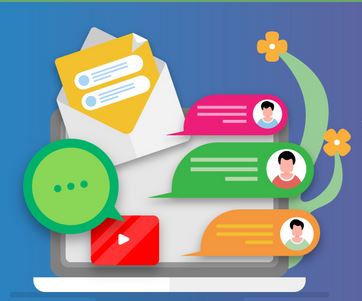Welcome to the world of email marketing! If you’re just starting out, this guide is designed especially for you. We aim to provide clear and straightforward steps to help you launch successful cold email campaigns. You’ll learn how to transform potential leads—those who have shown interest but haven’t yet made a purchase—into loyal customers through effective communication.
In today’s fast-paced business environment, email marketing stands out as one of the most reliable and cost-effective methods for generating leads. Yet, sending cold emails—reaching out to individuals you’ve never interacted with—can feel daunting. How do you break the ice and turn these initial contacts into warm, engaged prospects and, ultimately, paying customers? The key lies in strategy, patience, and a touch of finesse.
This guide will take you through the essential steps to ensure your cold emails do more than just get noticed; they’ll pave the way for meaningful business relationships that convert leads into customers.
Step 1: Know Who You’re Talking To—Research Comes First
A common misconception is that cold emailing is about sending the same message to as many people as possible. In reality, success hinges on quality over quantity. The more personalized and relevant your message, the more likely it will resonate with the recipient.
For instance, Lisa Hayes, a sales manager at a tech company, remembers when she received an email that referenced a recent industry conference she’d attended. The sender had clearly done their homework, mentioning the keynote speaker and how her company could benefit from one of the new trends discussed at the event. Lisa said, “That email stood out because it wasn’t just a pitch—it was tailored to something I actually cared about. That level of effort made me want to learn more.”
Here’s how you can replicate this:
- LinkedIn: Look up your prospect’s job role and responsibilities. If their company has been in the news, mention it. Showing that you understand their challenges makes your email feel more personal.
- Competitor Research: Have similar businesses found success with what you offer? If so, you’ve got a good reason to believe your potential lead will be interested.
- Industry Insights: Look at case studies or reports that address common issues in your prospect’s field. This information will give your email more authority.
Stat to remember: Personalization can increase email open rates by 26% .
By investing time in research, your cold email becomes a solution to a problem they might already be thinking about—not just another sales pitch.
Don’t Buy Email Lists—Here’s Why
The idea of purchasing a list of email addresses might sound like a quick way to get started, but it can do more harm than good.
- Legal Risks: The U.S. has strict rules like the CAN-SPAM Act, which requires permission before sending marketing emails. If you buy a list, chances are you don’t have that consent.
- Low Engagement: People who haven’t signed up for your emails are unlikely to engage. You’ll face low open rates and poor results, making your investment a waste.
Consider the experience of a small B2B startup that bought a list for their first major campaign. They sent 10,000 emails and waited for the responses. Nothing. Not a single reply. The problem? The majority of the recipients were completely irrelevant, leading to open rates below 2% and multiple spam complaints. The campaign tanked their email deliverability.
Instead of shortcuts, build an organic email list.
Build an Organic Email List—The Right Way
Growing an organic email list takes time, but it’s worth it. One company, Daily Harvest, built their email list by offering new customers $25 off their first purchase if they subscribed. The result? Their email list grew rapidly, and these were people who had a genuine interest in the brand.
Here are some tried-and-true methods:
- Offer Value: Give away something helpful—a free eBook, guide, or webinar access—in exchange for email addresses.
- Leverage Social Media: Promote your content on LinkedIn or Twitter to drive traffic to your email signup forms.
- Exclusive Deals: Offering special discounts or early access to new products is a great way to entice people to subscribe.
Stat to remember: According to HubSpot, companies that create custom landing pages for email signups see 55% more leads than those that don’t .
Use Ads to Grow Your List—Without Breaking the Bank
Paid ads can be a highly effective way to grow your email list. For example, Monday.com, a project management software, uses targeted Facebook ads offering a free trial of their platform. They created tailored ads for different industries and roles—like project managers and marketing teams—focusing on their specific pain points.
By doing this, Monday.com wasn’t just growing their list—they were getting highly targeted leads. People who signed up already had a genuine interest in the tool, meaning they were far more likely to convert later.
Stat to remember: Facebook Ads that use targeting based on customer behavior can increase conversion rates by 37% .

Step 2: Build Lasting Relationships with Your Email List
Once you’ve built your email list, it’s time to nurture those relationships. Sending a cold email is just the beginning. You need to consistently offer value and remind them why they signed up in the first place.
For example, SaaS company Drift ran a drip email campaign for new subscribers, offering them free marketing automation resources over the span of a few weeks. Each email was designed to build trust and gently guide leads toward booking a demo.
Quote to remember: “Nurturing leads is not a one-size-fits-all game. It’s about constantly delivering the right value at the right time.” — Brian Dean, Founder of Backlinko
Step 3: Craft a Compelling Subject Line
Your subject line is the first thing your recipient sees, so it has to grab attention. Consider this statistic: 47% of email recipients open emails based solely on the subject line .
A successful subject line:
- Piques curiosity: Reference a challenge they face.
- Example: “Facing XYZ Problem? Here’s How We Helped Others Solve It.”
- Is short and to the point: Aim for 6-10 words.
- Example: “Quick Solution to [Their Problem] in [Industry].”
Pro Tip: Avoid overly salesy subject lines. Instead, focus on how you can help solve their problems.
Step 4: Offer Value, Not Just a Sales Pitch
Imagine this scenario: You receive an unsolicited email that dives straight into a hard sell. Most people would hit delete instantly. Now imagine another email that starts by offering a free industry report or valuable case study. Which one are you more likely to engage with?
The goal of your cold email shouldn’t be to make a sale right away. It’s to build trust. One company, HubSpot, excels at this. In their early-stage emails, they focus on providing free tools and resources, knowing that over time, this builds credibility and establishes them as an industry leader.
Step 5: Follow Up Thoughtfully
Most cold emails won’t get a reply on the first try. In fact, it’s often the second or third email that gets the conversation going. But be careful—follow-ups should add new value, not repeat the same message.
One company, Lemlist, successfully used personalized video follow-ups to engage with cold prospects. The videos included new insights, making the recipients feel valued and more likely to respond.
Stat to remember: Studies show that 80% of sales require five follow-up emails .
Step 6: Measure and Optimize Your Campaigns
Successful email marketers don’t just set it and forget it. Tracking your email performance is critical for improving your strategy.
What to measure:
- How many people opened your emails? This shows how well your subject lines are performing.
- Are people responding to your emails? This indicates how engaging your message is.
By measuring and optimizing, you’ll see what works and can improve your strategy over time.
Example: The Journey of a Small Business Email Campaign
Business Background: A small e-commerce business, Crafted Goods, specializes in handmade products. They decide to launch an email campaign to promote a new product line.
Initial Campaign:
- Subject Line: “Discover Our New Handcrafted Collection!”
- Open Rate: 15%
- Click-Through Rate (CTR): 2%
- Conversion Rate: 0.5%
Measurement Insights: After analyzing the campaign’s performance, Crafted Goods discovers that:
- The open rate is lower than industry standards (which is around 20-30% for e-commerce).
- The CTR is also low, indicating that recipients aren’t engaging with the email content.
- The conversion rate is minimal, suggesting that the email is not effectively driving sales.
Optimizing the Campaign:
A/B Testing Subject Lines:
- They experiment with different subject lines like “Exclusive: Be the First to Shop Our New Collection!” and “Limited Time: Explore Our New Handcrafted Treasures!”.
- The new subject line achieves a 25% open rate.
Improving Content:
- They analyze which products received clicks and adjust their email layout to highlight bestsellers more prominently, using engaging images and compelling descriptions.
- They include social proof, such as customer reviews and photos, which enhances credibility and interest.
Segmenting the Audience:
- They segment their audience based on previous purchase behavior, sending tailored emails to different groups (e.g., returning customers vs. new subscribers).
- This results in more personalized content, improving engagement.
Clear Call-to-Action (CTA):
- They refine their CTA from “Learn More” to “Shop Now and Get 10% Off Your First Order!” to create a sense of urgency and value.
Results After Optimization:
- New Open Rate: 28%
- New CTR: 10%
- New Conversion Rate: 2.5%
Conclusion: Through consistent measurement and optimization, Crafted Goods successfully transformed their initial email campaign into a highly effective marketing tool. By focusing on what metrics indicated success, they were able to engage their audience more effectively, driving higher open rates, increased clicks, and ultimately boosting sales. This demonstrates that continuous analysis and adjustments are key components in achieving email marketing success.
Step 7: Domain Warm up
Properly warming up your domain is a critical component of a successful cold email campaign. It helps establish your sender reputation, improves deliverability, and ultimately increases the chances of turning cold leads into warm prospects. By taking the time to warm up your domain, you set a solid foundation for your email marketing efforts, ensuring that your messages reach the right people at the right time.
Incorporating this warm-up strategy into your overall cold emailing plan will significantly enhance your chances of success in converting potential leads into loyal customers.
Why is Domain Warm-Up Important?
Establishing Reputation: New domains or those that haven’t been used for sending marketing emails are seen as risky by ISPs. Warming up helps build a reputation as a legitimate sender.
Improved Deliverability: A well-warmed domain has a higher chance of landing in the inbox of your recipients, improving your email open and engagement rates.
Avoiding Spam Filters: Sending too many emails from a new domain too quickly can trigger spam filters, leading to low deliverability rates. Gradual increases allow ISPs to recognize your email behavior as legitimate.
Steps to Warm Up Your Domain
- Verify Your Domain: Ensure your domain is properly authenticated with SPF, DKIM, and DMARC records. These technical measures improve your credibility as a sender.
- Start Slow: Begin by sending a small number of emails each day (e.g., 10-20 emails) from your new domain. Gradually increase the volume over several weeks. For example, you could double the number of emails you send each week.
- Engage with Your Audience: Initially, focus on sending emails to contacts who are likely to engage with your content (such as previous customers, colleagues, or warm leads). Their positive engagement (opens, clicks, replies) signals to ISPs that your emails are valuable.
- Monitor Metrics: Keep an eye on your email metrics, such as open rates, bounce rates, and spam complaints. If you notice any concerning trends, adjust your sending volume or revisit your content strategy.
- Use a Consistent Sending Schedule: Regularity is key. Sending emails at consistent times each day helps ISPs recognize your sending patterns as trustworthy.
- Limit the Use of Attachments and Links: In the beginning, avoid including multiple links or attachments in your emails, as these can raise red flags for spam filters. Focus on clean, simple text-based emails.
- Engage in List Hygiene: Regularly clean your email list to remove inactive addresses. Sending to unengaged recipients can harm your sender reputation.
In Summary
Cold emailing requires a mix of strategy, patience, and personalization. By focusing on the recipient’s needs, offering real value, and using data to continuously improve, you can turn cold emails into meaningful business relationships that generate leads and sales over time.
Quote to remember: “Cold emails may feel like shooting in the dark, but with the right research and message, they can light up the path to genuine connections.” — Sarah Miles, Email Marketing Expert
If you need support navigating the world of email marketing, don’t hesitate to partner with an expert email marketing team that can help you refine your approach and grow your business.




